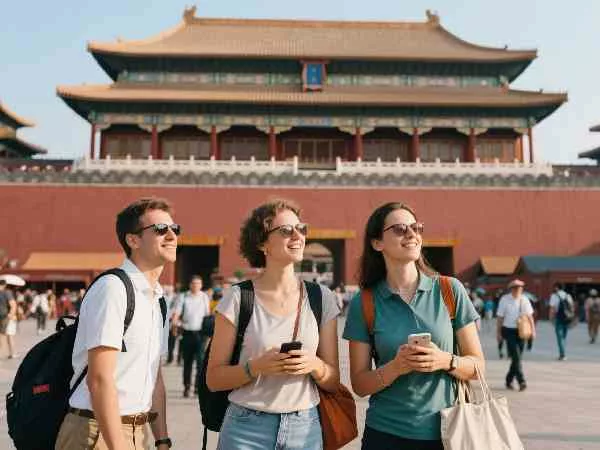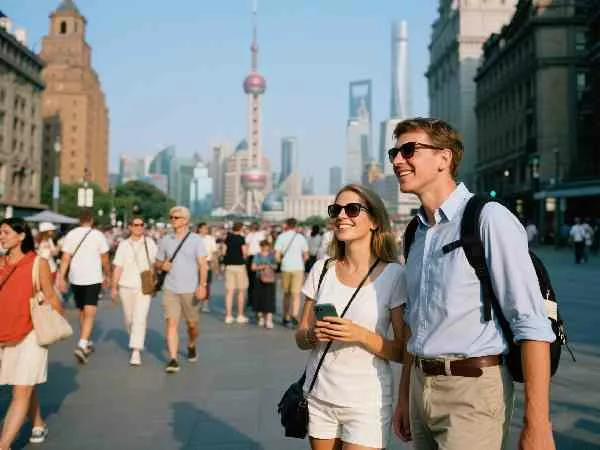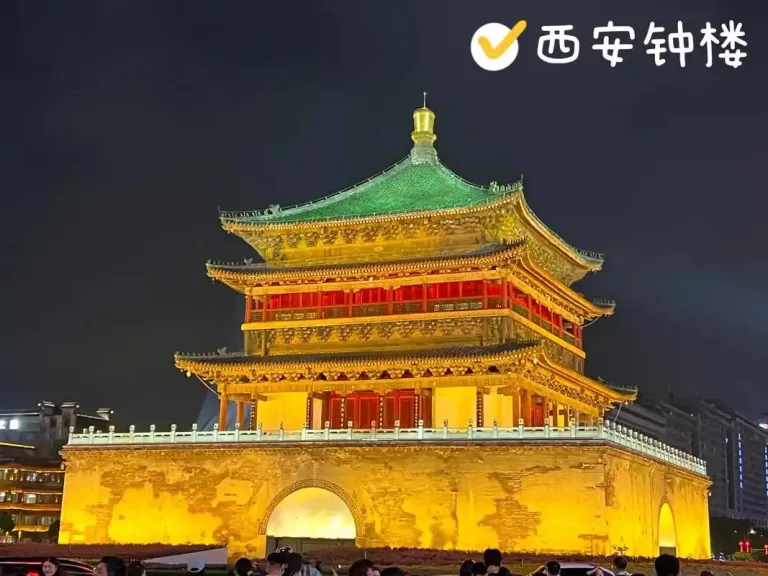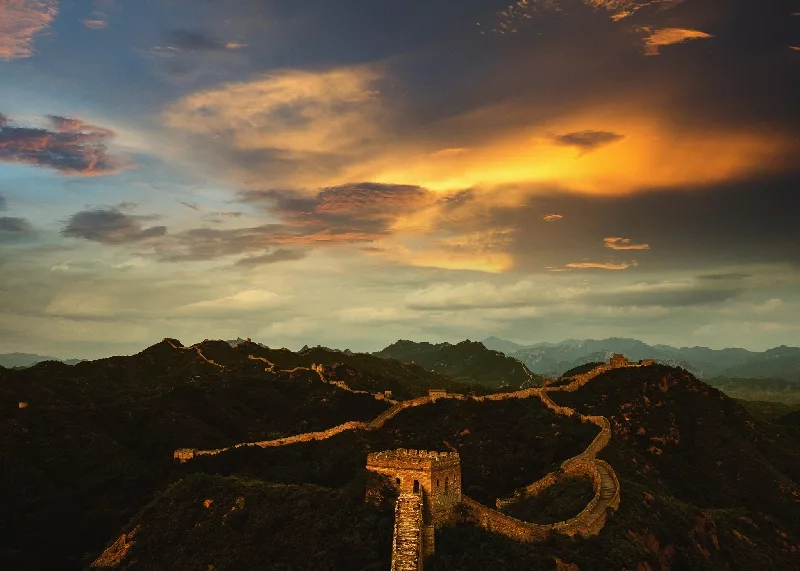Introduction: Embark on Your 10-Day China Adventure
Are you ready to embark on the journey of a lifetime? A 10-day trip to China is a gateway to a world of ancient wonders, vibrant modern cities, and breathtaking natural landscapes. From the iconic Great Wall to the bustling streets of Shanghai, this vast country offers a rich tapestry of experiences that will leave you with memories to last a lifetime.
China, with its long history spanning thousands of years, is a treasure trove of historical and cultural heritage. It's a place where you can walk in the footsteps of emperors in the Forbidden City, marvel at the ingenuity of the Terracotta Army, and immerse yourself in the tranquility of ancient temples. At the same time, China is also at the forefront of modern development, with cities like Shenzhen and Shanghai boasting cutting-edge architecture, high-tech innovation, and a vibrant nightlife.
For American travelers, a 10-day China trip offers a unique opportunity to step out of the familiar and into a world of contrasts. Whether you're a history buff eager to explore ancient ruins, a food lover ready to savor the diverse flavors of Chinese cuisine, or an adventure seeker looking to hike through stunning mountains or cruise along scenic rivers, China has something to offer.
In this guide, we'll take you through the top attractions, provide practical tips on getting around, suggest the best places to stay, and offer insights into local customs and traditions. So, pack your bags, get your passport ready, and let's start planning your unforgettable 10-day China trip!

Beijing: The Historic Heart of China
Tiananmen Square and the Forbidden City
Begin your 10-day China trip in Beijing, the nation's political and cultural hub. Your first stop should be Tiananmen Square, one of the world's largest urban squares and a place rich in historical importance. Here, you can feel the weight of history as you stand in the same spot where momentous events have taken place. It's not just a vast open space; it's a symbol of China's modern history and the center of national celebrations.
Adjacent to Tiananmen Square is the Forbidden City, an imperial palace complex that once served as the home of emperors. With over 980 buildings, it offers a vivid and immersive look into China's dynastic past. The architecture is grand and imposing, with red walls, yellow tiles, and intricate carvings that showcase the skill and artistry of the time. American visitors are often in awe of the scale of the Forbidden City and the well-preserved royal artifacts on display. It's a UNESCO World Heritage site that shouldn't be missed, as it provides a unique window into China's imperial history.
The Great Wall: Mutianyu Section
No visit to China would be complete without experiencing the Great Wall, one of the greatest engineering feats in the world. While the Badaling section is popular, the Mutianyu section offers a more peaceful and scenic experience. Surrounded by lush greenery, it provides a quieter alternative with fewer crowds, allowing you to fully appreciate the beauty and grandeur of the wall.
You can take a cable car up for breathtaking panoramic views of the surrounding landscape, and then embark on a hike along the restored walls. As you walk, you'll be able to admire the ancient military engineering that went into building this wonder. The strategic placement of watchtowers and the sturdy construction of the wall are a testament to the ingenuity of the Chinese people. And for a thrilling end to your visit, don't miss the opportunity to toboggan down the mountain, combining history and adventure in one unforgettable experience.
Temple of Heaven and Hutong Exploration
Dive into the spiritual and traditional side of Beijing at the Temple of Heaven, a place where emperors of the past performed annual prayers for good harvests. The circular architecture of the temple is not only beautiful but also holds deep symbolic meaning. The symmetry and harmony of the buildings, along with the carefully designed layout, create a sense of tranquility and reverence.
After visiting the Temple of Heaven, wander through the hútòng (hutongs), the narrow alleyways lined with traditional courtyard homes. These hutongs are like living museums, offering a glimpse into the daily lives of Beijingers in the past. Join a rickshaw tour to explore these historic neighborhoods, stopping at local teahouses to sample jasmine tea and learn about Beijing's rich folk culture. You might even have the chance to interact with locals, who can share stories and traditions that have been passed down through generations. It's a great way to experience the real Beijing and gain a deeper understanding of its culture.
Xi’an: Terracotta Warriors and Ancient Capital
The Terracotta Army: A Glimpse into Imperial Burial Art
Travel to Xi’an, the ancient capital of 13 dynasties, to witness the Terracotta Army, a UNESCO site and one of the world’s greatest archaeological discoveries. Over 8,000 life-sized clay soldiers, horses, and chariots were buried with Emperor Qin Shi Huang in 210 BCE to protect him in the afterlife. The sheer scale and detail of the warriors—each with unique facial features—make this a jaw-dropping experience for history enthusiasts.
The discovery of the Terracotta Army in 1974 by local farmers was nothing short of a miracle. It opened a window to a bygone era, revealing the grandeur and might of the Qin Dynasty. As you stroll through the vast pits, you can almost feel the energy and discipline of the ancient army. The craftsmanship is so remarkable that you can see the individual expressions on the faces of the soldiers, from the determined looks in their eyes to the wrinkles on their brows. It's a true testament to the artistry and skill of the ancient Chinese artisans.
Xi’an City Wall and Muslim Quarter
Cycle along the well-preserved Xi’an City Wall, the largest ancient city wall in China, for a panoramic view of the city’s blend of old and new. Afterward, explore the Muslim Quarter, a vibrant neighborhood filled with aromatic street food stalls. Try zhēngjiǎo (steamed dumplings), ròujiāmó (Chinese hamburgers), and sweet persimmon cakes, reflecting the city’s multicultural heritage from the Silk Road.
The Xi’an City Wall, built during the Ming Dynasty, is a masterpiece of ancient architecture. Standing at 12 meters tall and stretching 13.7 kilometers in length, it offers a unique way to experience the city. Rent a bike and pedal around the wall, taking in the views of the city below. You can see traditional courtyard houses, modern skyscrapers, and everything in between. It's a great way to get a sense of Xi'an's past and present.
Once you've had your fill of the city wall, head to the Muslim Quarter. This bustling area is a food lover's paradise. The narrow streets are lined with stalls selling a variety of delicious treats. The ròujiāmó, a type of Chinese hamburger with tender, spiced meat sandwiched between flatbread, is a must-try. The zhēngjiǎo, with their plump fillings and delicate wrappers, are also a local favorite. And don't forget to sample the sweet persimmon cakes, a perfect end to a meal. As you wander through the market, you'll also notice the influence of the Silk Road in the architecture and the people. The area has a rich history of trade and cultural exchange, and it's evident in every corner.

Shanghai: Modern Marvels and Riverside Glamour
The Bund: A Fusion of Past and Present
As you transition from the historical wonders of Beijing and Xi’an to the modern allure of Shanghai, The Bund serves as the perfect introduction. This world - famous waterfront area is a harmonious blend of old - world charm and contemporary grandeur. Lined with a row of colonial - era buildings, often referred to as the “exterior of the world's architecture,” they stand as silent witnesses to Shanghai's history as a major port and international trading city in the past.
On the opposite side of the Huangpu River, the Pudong skyline rises like a forest of glass and steel. The Oriental Pearl Tower, with its unique spherical design, has become an iconic symbol of Shanghai. Standing at 468 meters tall, it offers breathtaking views of the city. Nearby, the Shanghai Tower, towering at 632 meters, is one of the tallest buildings in the world, adding to the futuristic charm of the skyline.
A visit to The Bund at sunset is a must - do. As the sun dips below the horizon, the golden rays paint the buildings in a warm glow. The lights of the skyscrapers in Pudong start to twinkle, creating a dazzling contrast against the darkening sky. It's a sight that perfectly encapsulates the spirit of Shanghai - a city that respects its past while racing towards the future. After enjoying the view, you can cross the river via the tunnel or by ferry to explore Pudong, where you can visit modern shopping malls, high - tech companies, and innovative art galleries.
Yu Garden and Old Town Market
For a taste of traditional Shanghai, head to Yu Garden and the adjacent Old Town Market. Yu Garden, a masterpiece of classical Chinese garden design, was built during the Ming Dynasty. As you stroll along the winding paths, you'll be greeted by rockeries that seem to tell stories of ancient times, serene ponds filled with colorful koi fish, and elegant pavilions where you can take a moment to rest and soak in the peaceful atmosphere. The carefully manicured plants and the sound of trickling water create a sense of tranquility, a stark contrast to the bustling city outside.
The Old Town Market, also known as Yuyuan Bazaar, is a vibrant marketplace filled with the sights, sounds, and smells of old Shanghai. The narrow alleys are lined with shops selling a wide variety of traditional Chinese handicrafts. You can find intricately carved jade pieces, delicate silk scarves, and beautiful calligraphy works. The air is filled with the aroma of street food, and there are plenty of opportunities to sample local delicacies.
Nanxiang Steamed Bun Restaurant, located within the market, is a food lover's paradise. Specializing in xiéfěn, or soup dumplings, it has been serving these delicious treats for over a century. The dumplings are carefully crafted, with a thin wrapper that holds a savory filling and a rich, flavorful soup. Bite into one carefully, and you'll experience a burst of flavors that are both comforting and exciting. It's a culinary experience that perfectly represents the unique charm of Shanghai's food culture.

Guilin and Yangshuo: Natural Beauty on the Li River
Li River Cruise: Karst Mountains and Emerald Waters
Guilin and Yangshuo, located in southern China's Guangxi Zhuang Autonomous Region, are a haven for nature lovers. The region is renowned for its unique karst landscape, which features dramatic limestone peaks rising from the ground like giant stone pillars. This natural wonder is best experienced on a Li River cruise, a journey that takes you through some of the most beautiful scenery in China.
A four - hour cruise along the Li River is like stepping into a living Chinese ink - wash painting. The limestone karsts, with their jagged edges and mysterious caves, rise dramatically from the emerald - green waters of the Li River. The ever - changing shapes of the mountains, some resembling animals or mythical figures, add an element of magic to the scenery.
The cruise from Guilin to Yangshuo is particularly spectacular. Along the way, you'll pass by the Reed Flute Cave, a natural wonder that's often referred to as the "Art Palace of Nature." Inside the cave, colorful stalactites and stalagmites create a magical world. The lights installed in the cave enhance the beauty of these natural formations, making them look like something out of a fairytale. American tourists often marvel at the intricate patterns and the otherworldly atmosphere of the cave. It's a place where nature's artistry is on full display.
Yangshuo Countryside: Biking and Rice Terraces
After the cruise, Yangshuo offers a different kind of natural charm. Renting a bike in Yangshuo is a great way to explore the idyllic countryside. As you pedal along the narrow roads, you'll pass through vast rice paddies that change colors with the seasons. In the spring, the rice paddies are a lush green, while in the fall, they turn a golden yellow, creating a beautiful contrast against the backdrop of the karst mountains.
You'll also encounter ancient villages, where the locals still live a traditional way of life. The houses in these villages are made of stone and wood, and the villagers are often seen working in the fields or selling their handmade crafts by the roadside. The bamboo groves, with their tall, swaying bamboo stalks, provide a peaceful and serene environment. The sound of the bamboo rustling in the wind is like a gentle melody, adding to the tranquility of the countryside.
If you have the time and energy, a hike to the Longji Rice Terraces is a rewarding experience. This UNESCO - listed site is a masterpiece of agricultural engineering. The terraced fields cascade down the mountains, following the natural contours of the land. The Zhuang and Yao minorities, who have lived in the area for centuries, built these terraces to cultivate rice in the hilly terrain. The terraces not only provide a source of livelihood for the locals but also create a stunning visual spectacle.
At the end of a day filled with exploration, there's nothing better than a riverside dinner in Yangshuo. Indulge in beer fish, a local specialty. The fish is fresh from the Li River, cooked in a savory sauce with a hint of beer, and served with a side of local vegetables. As you enjoy your meal, you can listen to the gentle sound of the river flowing by, and watch the sunset paint the sky in warm hues. It's a perfect way to end your day in this beautiful corner of China, surrounded by nature's beauty and the flavors of the local cuisine.

Hangzhou: West Lake and Tea Culture
West Lake: Poetic Landscapes and Cultural Heritage
No 10-day China trip is complete without visiting Hangzhou’s West Lake, a UNESCO World Heritage site celebrated in Chinese poetry and art. This idyllic lake is not just a natural wonder but a living canvas that has inspired generations of poets, artists, and scholars. The moment you set eyes on it, you'll understand why it has been the subject of so much admiration.
Cruise to the Three Pools Mirroring the Moon, a tiny island with iconic stone pagodas. These stone pagodas, standing gracefully in the lake, are a symbol of West Lake. At night, when the moon is full, the scene is truly magical. The moonlight reflects on the water, creating a dreamy atmosphere. Each pagoda has five round holes, and when candles are lit inside during the Mid-Autumn Festival, the lake is filled with the reflections of the moon, both real and virtual, creating a breathtaking sight.
For a more immersive experience, take a walk along the Su Causeway. Lined with willow trees and blooming flowers, the causeway offers a peaceful retreat from the bustling city. In spring, the willow branches sway gently in the breeze, and the peach blossoms add a touch of color to the landscape. It's like walking through a painting, with the lake on one side and the lush greenery on the other. The lake's serene beauty is especially captivating in the morning, when locals practice tai chi and calligraphy by the water. It's a great opportunity to witness the harmony between nature and human life, and to soak up the peaceful and cultural atmosphere of the place.
Longjing Tea Village: Taste China’s Finest Green Tea
Just west of the lake lies Longjing Village, renowned for producing Longjing (Dragon Well) tea, one of China’s most prestigious green teas. As you enter the village, you'll be greeted by the fragrant aroma of tea leaves, which fills the air and creates a soothing and inviting atmosphere.
Visit a tea plantation to see how leaves are picked and processed. The tea pickers, with their skilled hands, carefully select the tenderest leaves, usually the first two leaves and a bud. This delicate process is crucial for the quality of the tea. After picking, the leaves go through a series of steps, including withering, frying, rolling, and drying. Each step is carefully controlled to bring out the unique flavor and aroma of Longjing tea.
Then, join a tea-tasting session to learn about the art of the Chinese tea ceremony. The tea ceremony is not just about drinking tea; it's a way to appreciate the beauty and culture of tea. The host will show you how to properly brew the tea, using the right amount of tea leaves and water temperature. You'll learn to observe the color of the tea, smell its fragrance, and taste its smoothness. The first sip of Longjing tea is a revelation. The fresh, mellow flavor, with a hint of sweetness, lingers on your palate, leaving you refreshed and craving for more. It's a sensory experience that allows you to connect with the land and the people who produce this wonderful tea.
Don’t miss the chance to buy fresh tea leaves as a fragrant souvenir. The tea leaves you buy here are freshly picked and processed, ensuring the best quality. You can take them home and share the taste of China with your friends and family, or enjoy a cup of Longjing tea whenever you want to recall your wonderful 10-day China trip.
Practical Tips for Your 10-Day China Trip
Transportation: Trains vs. Flights
Getting around China efficiently is key to maximizing your 10-day trip. The high - speed rail network in China is a marvel of modern engineering. It's not only fast but also extremely comfortable. Taking the bullet train between major cities like Beijing, Xi’an, and Shanghai is a great option. These journeys typically take only 3 - 5 hours each, allowing you to save time while enjoying the scenic views outside the window. The well - maintained trains, comfortable seats, and clean facilities make the train journey a pleasant experience in itself. You can relax, read a book, or simply soak in the passing landscapes as you travel from one city to another.
However, for longer distances, such as traveling to Guilin or Hangzhou, domestic flights are often more convenient. Major airlines in China offer frequent connections, making it easy to reach your destination quickly. Booking flights in advance can also help you get better deals and ensure that you have a seat on your preferred flight. When traveling by air, be sure to check the luggage allowance and any additional fees to avoid any surprises at the airport.
Language and Communication
While English is more commonly spoken in major cities, it can be a bit of a challenge to communicate in smaller towns and rural areas. To overcome this language barrier, it's a good idea to carry a translation app. Google Translate is a popular choice as it can translate text, speech, and even offer real - time camera translation, which is handy when reading signs or menus.
Learning a few basic Mandarin phrases can also go a long way. Simple greetings like “Xièxie” (thank you) and “Nǐ hǎo” (hello) can help you build a friendly rapport with the locals. People in China appreciate the effort when foreigners try to speak a bit of their language. Many tourist - heavy areas, such as popular attractions, hotels, and restaurants, usually have English signage, which makes it easier for you to navigate. Hotel staff often speak basic English as well, and they can assist you with various inquiries, from directions to restaurant recommendations.
Visa and Entry Requirements
As an American traveler, you'll need a valid Chinese visa to enter the country. The application process can be completed through the Chinese Embassy or consulate in the United States. Make sure that your passport is valid for at least six months from the date of your intended entry into China. This is a standard requirement for many countries, and it ensures that you have enough time to stay in China and travel as planned.
During the visa application process, be sure to provide all the necessary documents accurately and in a timely manner. This may include a completed visa application form, a passport - sized photo, proof of your travel itinerary, and evidence of your financial means to support your stay in China. Once you receive your visa, it's a good idea to keep a digital copy of it on your phone or other electronic device, along with a copy of your itinerary. This way, you can easily access the information if needed, especially in case you misplace your physical visa or documents.
Safety and Health
China is generally a very safe country for travelers. The low crime rate makes it a worry - free destination for exploring. However, like in any crowded area around the world, it's important to keep an eye on your personal belongings. Pickpockets may be present in busy tourist areas, markets, or public transportation, so keep your valuables in a secure place and be vigilant.
When it comes to food and drink, it's advisable to drink bottled water to avoid any potential issues with tap water. Trying street food is one of the joys of traveling in China, but it's best to choose stalls that are busy and have a high turnover of customers. This is a good sign that the food is fresh and prepared in a relatively hygienic environment.
Carrying a basic first - aid kit with essentials like band - aids, pain relievers, and antiseptic wipes is always a smart move. In case of minor injuries or illnesses, you'll be able to take care of yourself. Most major hospitals in Chinese cities have English - speaking staff, so if you do need medical assistance, you should be able to communicate your symptoms effectively. Additionally, it's a good idea to have travel insurance that covers medical emergencies during your 10 - day China trip. This can give you peace of mind and ensure that you're financially protected in case of unexpected health issues.
Conclusion: Create Lasting Memories on Your 10-Day China Journey
A 10-day trip to China offers a perfect balance of iconic landmarks, natural wonders, and cultural experiences that resonate with American travelers. From the historic grandeur of Beijing and Xi’an to the modern buzz of Shanghai and the tranquil beauty of Guilin and Hangzhou, each destination adds a unique flavor to your adventure. Use this guide to craft a well-rounded itinerary, stay flexible for spontaneous discoveries, and embrace the warmth and diversity of China—you’ll return with stories to share for a lifetime. Ready to start planning your unforgettable 10-day China trip? The journey begins now.





